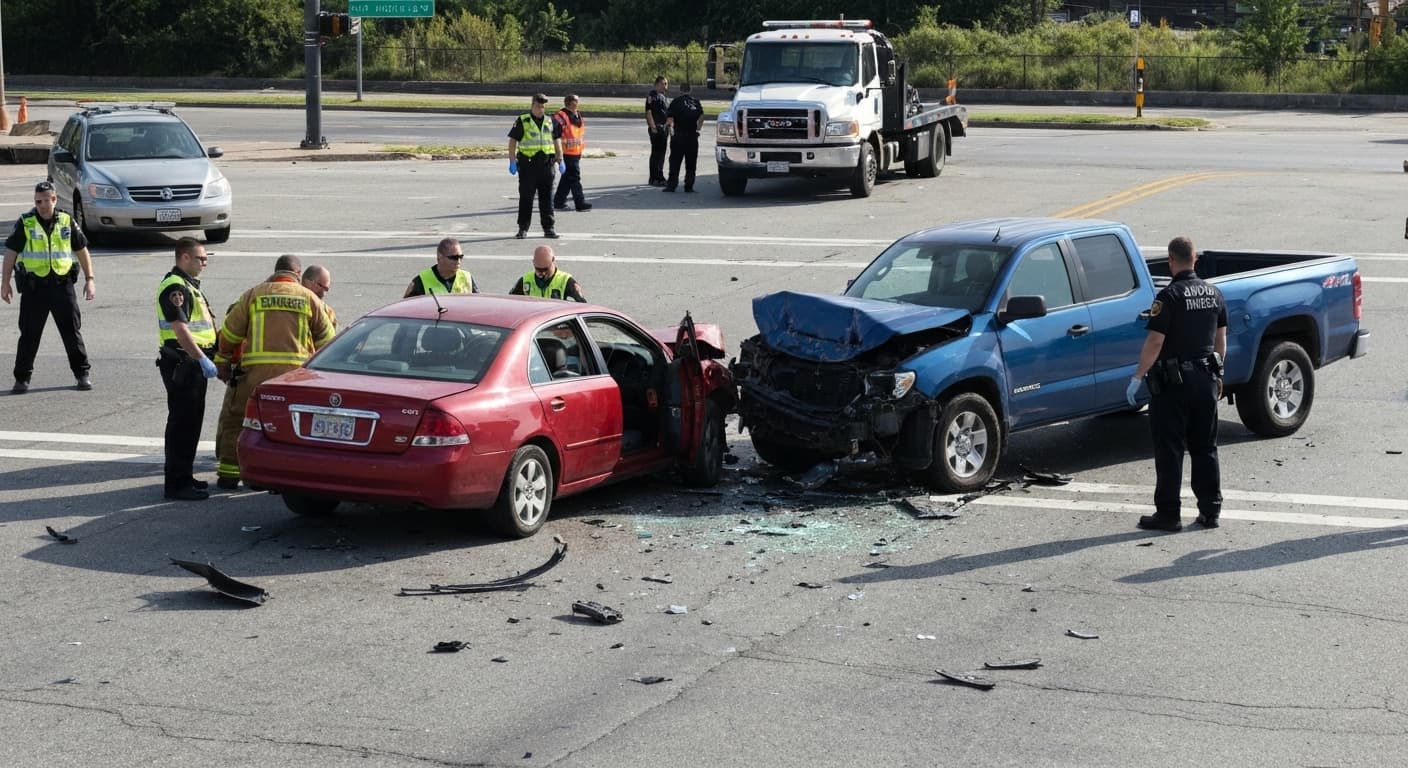
9 Questions to Ask Your Insurance Adjuster
Learn about 9 questions to ask your insurance adjuster and how it affects your legal rights after a car accident. Get expert advice from experienced car accident attorneys.
# 9 Questions to Ask Your Insurance Adjuster
Communicating with an insurance adjuster after a car accident is a crucial step in protecting your rights and securing fair compensation. While adjusters are trained professionals working for insurance companies, they may not always prioritize your interests. Knowing the right questions to ask can help you gather essential information, clarify your coverage, understand the claims process, and avoid common mistakes that could reduce your settlement. This comprehensive guide covers the 9 most important questions to ask your insurance adjuster, with detailed explanations of why each question matters and how the answers can impact your claim.
1. What Information Do You Need from Me?
This foundational question demonstrates your willingness to cooperate while gaining clarity about the adjusters expectations and requirements.
Why This Question Matters
- Demonstrates cooperation with the claims process
- Prevents unnecessary delays caused by missing documentation
- Establishes clear communication expectations
- Allows proactive document gathering and preparation
Common Documentation Requests
- Accident report and police investigation details
- Medical treatment records and billing statements
- Vehicle repair estimates and damage photographs
- Lost wage documentation and employment verification
- Witness contact information and statements
- Previous medical history and treatment records
Red Flags to Watch For
- Requests for irrelevant personal information
- Pressure for immediate information provision
- Unreasonably extensive documentation requirements
- Requests that seem designed to discourage claims
2. How Will This Claim Affect My Insurance Rates?
Understanding the potential impact on your future insurance premiums is essential for making informed decisions about settlement amounts and timing.
Rate Increase Mechanics
- Claims history impact on premium calculations
- At-fault vs. not-at-fault accident distinctions
- Violation type and severity considerations
- State-specific rate increase limitations
- Accident forgiveness program eligibility effects
Long-Term Financial Implications
- Multi-year premium increase duration possibilities
- Safe driver discount loss consequences
- Future claim eligibility restrictions
- Insurance company switching implications
- Renewal difficulty potential increases
Strategic Timing Considerations
- Claim reporting delay potential benefits
- Accident forgiveness waiting period requirements
- Rate stabilization program qualification criteria
- Premium increase mitigation strategy options
3. What Is the Claims Process Timeline?
Understanding the expected processing timeline helps you set realistic expectations and identify when delays might indicate problems with your claim.
Standard Processing Phases
- Initial claim intake and validation period
- Investigation and evidence collection timeline
- Medical treatment completion waiting periods
- Settlement negotiation and approval phases
- Final payment processing and disbursement
Timeline Factors and Variables
- Claim complexity and documentation requirements
- Medical treatment continuation considerations
- Expert witness involvement necessity and scheduling
- Liability dispute investigation extent and duration
- Multiple party coordination complexity effects
Delay Warning Indicators
- Unexplained processing timeline extensions
- Consistent excuse provision without resolution
- Excessive documentation requests as delay tactics
- Lack of progress updates and communication breakdowns
4. What Is My Policy Coverage Amount?
Knowing your policy limits helps you understand the maximum amount available for your claim and avoid settling for less than you are entitled to receive.
Coverage Limit Components
- Bodily injury liability per-person and per-accident limits
- Property damage liability coverage amounts
- Underinsured motorist bodily injury protection
- Uninsured motorist coverage availability and limits
- Medical payments coverage inclusion and amounts
- Personal injury protection (PIP) coverage details
Policy Stacking Considerations
- Multiple policy combination possibilities
- Umbrella liability policy integration
- Commercial and personal policy coordination
- Coverage limit maximization strategies
- Deductible impact on effective coverage amounts
Coverage Verification Methods
- Policy document review and interpretation
- Previous claim payment pattern analysis
- State minimum requirement compliance confirmation
- Coverage upgrade option exploration opportunities
5. What Evidence Do You Have?
Understanding what evidence the insurance company has collected helps ensure they have conducted a thorough investigation and allows you to provide additional evidence that supports your claim.
Standard Evidence Categories
- Police accident report details and officer observations
- Traffic camera footage availability and content
- Witness statements and contact information verification
- Vehicle damage assessment reports and repair estimates
- Medical treatment records and expert opinions
- Accident reconstruction reports and technical analysis
Evidence Quality Assessment
- Investigation thoroughness and completeness evaluation
- Missing evidence identification and provision opportunities
- Conflicting evidence recognition and resolution
- Expert analysis credibility and reliability assessment
- Documentation chain of custody verification
Evidence Preservation Strategies
- Important document secure storage establishment
- Digital evidence backup and duplicate creation
- Evidence tampering prevention measures
- Third-party evidence collection and verification
- Timeline reconstruction documentation maintenance
6. How Is Fault Determined?
Understanding how the insurance company determines fault helps you prepare appropriate responses and ensure their assessment aligns with the actual circumstances of your accident.
Fault Determination Methods
- Police officer accident report fault assignment
- Insurance company liability investigation procedures
- Accident reconstruction expert analysis utilization
- Witness testimony evaluation and weighting
- Physical evidence assessment and interpretation
- Comparative negligence percentage calculations
Fault Assessment Factors
- Right-of-way violation identification and analysis
- Speed and following distance evaluation
- Distraction and impairment consideration
- Road and weather condition impact assessment
- Vehicle condition and maintenance status review
- Driver experience and training factor evaluation
Comparative Fault Implications
- Settlement amount reduction calculations
- State-specific comparative fault law applications
- Contributory negligence defense strategy considerations
- Fault percentage negotiation opportunities
- Appeal and dispute resolution option availability
7. What Is Your Settlement Authority?
Knowing the adjusters settlement approval authority helps you determine whether they can approve your desired settlement amount or if you need to escalate to a supervisor.
Adjuster Authority Levels
- Entry-level adjuster approval limit ranges
- Senior adjuster escalation authority thresholds
- Supervisor or manager settlement approval ranges
- Executive-level approval requirement amounts
- Corporate claim committee involvement thresholds
Authority Escalation Processes
- Higher-level adjuster contact and consultation procedures
- Supervisor approval request and scheduling processes
- Corporate claim department involvement requirements
- Executive decision-making process navigation
- Alternative dispute resolution option discussions
Negotiation Strategy Implications
- Settlement offer range determination capabilities
- Counter-offer authority level assessments
- Higher authority engagement timing considerations
- Negotiation leverage evaluation opportunities
- Realistic expectation setting based on authority levels
8. Can I Have This Conversation Recorded?
Requesting permission to record conversations creates an accurate record and protects all parties involved in the claims process.
Recording Legal Requirements
- Two-party consent state law compliance
- Federal recording law awareness and application
- Single-party consent state provisions understanding
- International call recording consideration requirements
- Recording device functionality and reliability verification
Recording Implementation Strategies
- Conversation recording permission request procedures
- All-party notification and consent documentation
- Recording quality and clarity assurance measures
- Recording storage and retention plan development
- Legal admissibility requirement satisfaction methods
Recording Protection Benefits
- Accurate conversation documentation preservation
- Misunderstanding and miscommunication prevention
- Evidence tampering protection and prevention
- Future dispute resolution facilitation
- Professional communication standard maintenance
9. What Happens If We Cannot Agree?
Understanding available options when agreement cannot be reached helps you prepare for alternative dispute resolution methods and litigation if necessary.
Alternative Dispute Resolution Options
- Mediation process facilitation and procedure
- Arbitration agreement consideration and implementation
- Settlement conference scheduling and participation
- Neutral evaluation service utilization opportunities
- Court-annexed alternative dispute resolution programs
Litigation Process Overview
- Lawsuit filing requirement and procedure explanation
- Court jurisdiction determination process
- Discovery phase timeline and requirement details
- Trial preparation necessity and scheduling
- Appeal option availability and process explanation
Cost-Benefit Analysis Factors
- Additional legal fee accumulation considerations
- Extended timeline impact assessments
- Emotional stress factor evaluations
- Relationship preservation opportunity assessments
- Long-term outcome probability calculations
Strategic Question Timing
Optimal Question Sequencing
- Basic information gathering question initiation
- Coverage and policy limit clarification progressions
- Evidence and fault determination discussion advancement
- Settlement authority and negotiation strategy consideration
- Dispute resolution option planning conclusion
Response Interpretation Strategies
- Answer consistency evaluation with previous communications
- Evasive response recognition and follow-up questioning
- Incomplete information identification and clarification requests
- Additional documentation requirement assessment
- Professional legal consultation consideration triggers
Common Insurance Tactics Recognition
Pressure Creation Techniques
- Artificial deadline establishment attempts
- Immediate decision requirement suggestions
- Authority figure manipulation implementations
- Emotional appeal and sympathy exploitation
- Time limitation creation strategies
Information Control Methods
- Selective evidence disclosure practices
- Conflicting information presentation attempts
- Documentation minimization strategies
- Expert opinion manipulation techniques
- Settlement offer anchoring tactics
Professional Legal Involvement Triggers
Attorney Consultation Indicators
- Unclear or inconsistent adjuster responses
- Coverage amount disagreements or confusion
- Settlement offer inadequacy perceptions
- Timeline delay concerns and frustrations
- Evidence dispute escalation situations
Legal Representation Benefits
- Professional negotiation and communication expertise
- Complex policy interpretation assistance
- Evidence collection and presentation coordination
- Court proceeding preparation and representation
- Bad faith insurance practice identification and response
Conclusion: Knowledge and Preparation Protection
Asking the right questions demonstrates your understanding of the insurance claims process and helps you avoid common mistakes that could reduce your compensation. While insurance adjusters are professionals working for insurance companies, you have the right to thorough, transparent communication and fair claim processing. These 9 questions provide a comprehensive framework for communicating effectively with your adjuster while protecting your rights and maximizing your claim value.
Remember, if you feel uncomfortable with the adjusters responses or believe your claim is not being handled fairly, consult with an experienced car accident attorney immediately. They can help interpret adjuster responses, protect your rights, and ensure you receive the compensation you deserve. Most personal injury attorneys offer free initial consultations and work on contingency fees, meaning you pay nothing unless they win your case.


